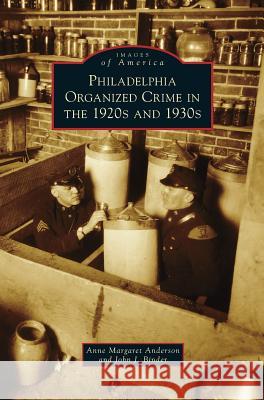Philadelphia Organized Crime in the 1920s and 1930s » książka
Philadelphia Organized Crime in the 1920s and 1930s
ISBN-13: 9781531672850 / Angielski / Twarda / 2014 / 130 str.
Philadelphia Organized Crime in the 1920s and 1930s explores a little-known but spirited chapter of the Quaker City's history. The hoodlums, hucksters, and racketeers of Prohibition-era Philadelphia sold bootleg booze, peddled illicit drugs, ran numbers, and operated prostitution and insurance rings. Among the fascinating personalities that created and contributed to the Philadelphia crime scene of the 1920s and 1930s were empire builders like Mickey Duffy, known as "Prohibition's Mr. Big," and Max "Boo Boo" Hoff, dubbed the "King of the Bootleggers"; the violent Lanzetti brothers, who ran their own illegal enterprise; mobster Harry "Nig Rosen" Stromberg, a New York transplant; and the arsenic widows poison ring, which specialized in fraud and murder. Bringing to light rare photographs and forgotten characters, the authors chronicle the underworld of Philadelphia in the interwar era. The upheaval caused by the gangs and groups herein mirrors the frenzied cultural and political shifts of the Roaring Twenties and the austere 1930s.
Philadelphia Organized Crime in the 1920s and 1930s explores a little-known but spirited chapter of the Quaker Citys history. The hoodlums, hucksters, and racketeers of Prohibition-era Philadelphia sold bootleg booze, peddled illicit drugs, ran numbers, and operated prostitution and insurance rings. Among the fascinating personalities that created and contributed to the Philadelphia crime scene of the 1920s and 1930s were empire builders like Mickey Duffy, known as "Prohibitions Mr. Big," and Max "Boo Boo" Hoff, dubbed the "King of the Bootleggers"; the violent Lanzetti brothers, who ran their own illegal enterprise; mobster Harry "Nig Rosen" Stromberg, a New York transplant; and the arsenic widows poison ring, which specialized in fraud and murder. Bringing to light rare photographs and forgotten characters, the authors chronicle the underworld of Philadelphia in the interwar era. The upheaval caused by the gangs and groups herein mirrors the frenzied cultural and political shifts of the Roaring Twenties and the austere 1930s.











